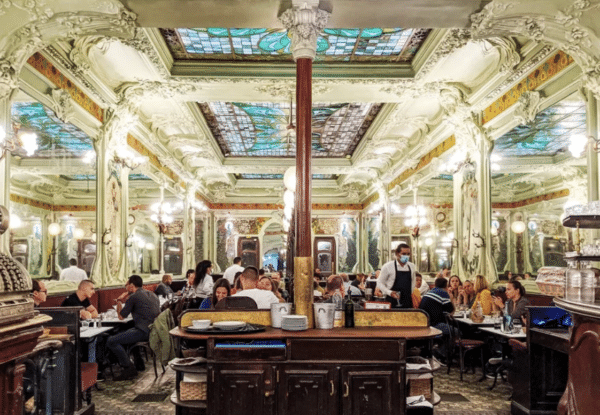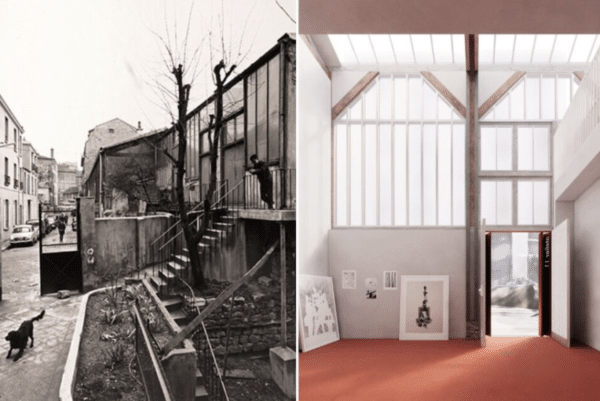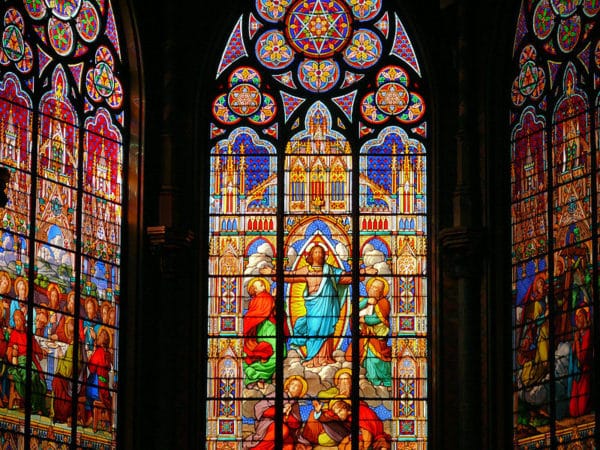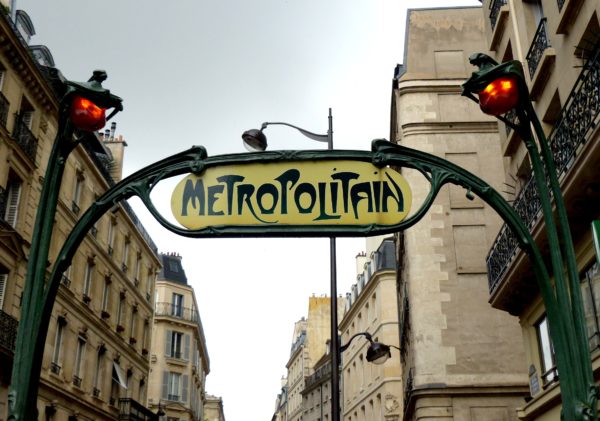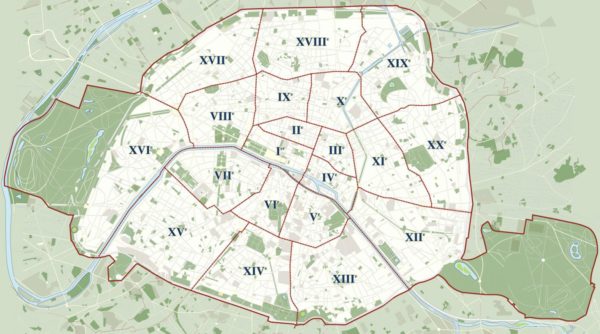Expert Insight, Breaking News, and Insider Stories on Real Estate in Paris
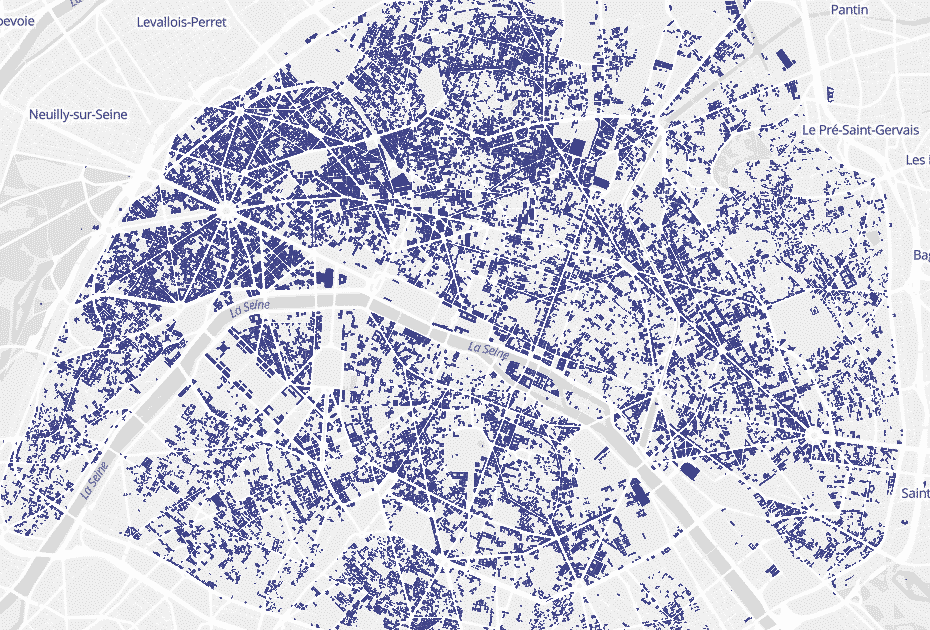
The History of Paris Architecture: Interactive Map
Ever wondered where the Haussmannian legacy is strongest, or where Paris’ oldest buildings are to be found? A new map from the city hall’s official urban planning think-tank illustrates the capital’s age using the most comprehensive database of building records to date.
APUR, the Atelier Parisien d’Urbanisme, compiled the interactive map using its own data and that of the Base Merimée – a long-standing database of French monuments – to leave virtually no stone unturned. The data covers 3,284 hectares (Paris measures 10,540, including parks, squares and roads).
As expected, the oldest buildings lie in the centre. Buildings built before 1800 are mostly found in the Marais, the Ile Saint-Louis and Saint-Germain-des-Pres, but figure prominently in all of the eight central arrondissements (spread below).
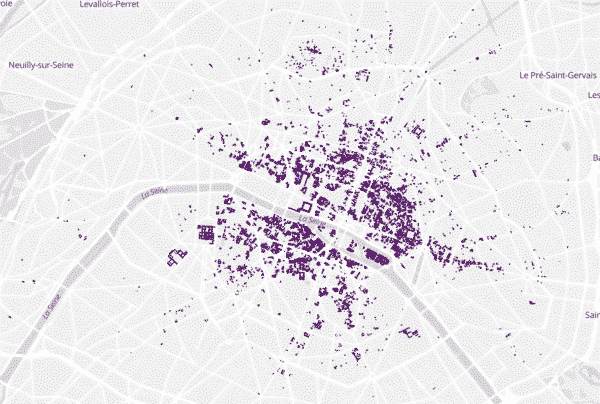
buildings built before 1800 © APUR
Roman era ruins exist in several place in Paris, notably parts of the Cluny Museum of the Middle Ages, which was built into the ruins of Roman baths. The remains of a Roman coliseum is located in a park near Metro Monge in the 5th arrondissement, and ruins are also visible in a dedicated museum below the large square in front of Notre Dame church. Many storage cellars in the city center got their starts as Roman rock quarries. The original Roman roads can still be identified as two straight, parallel roads that bisect Ile de la Cité, connecting the left and right banks.
Medieval buildings also survive to this day and can be identified by beams in the facade and interiors. Individual rooms tend to be smaller due to the limitations of timber size, and rough stone or half-timber walls can generally be exposed in apartments from this period. Dwellings typically fall into two categories, built for either the ruling class or the working class, as there was not much between. Good luck finding one with an elevator: their size and regulations on historical buildings make adding elevators difficult. The oldest building in Paris lies at 51 rue de Montmorency, near Arts et Metier, and dates from 1407. Medieval buildings are concentrated in the Marais.
Buildings from the 17th and 18th century are quite different from later Haussmannian architecture, and include the popular hôtel particular, mansions built for wealthy residents with rococo ornamentation. They tend to have higher ceilings on upper floors than Haussmannian apartment blocks, and balconies are much more rare in pre-Haussmannian buildings. The style of neoclassicism dominated public buildings. Elevators can also be scarce in this age building due to historical rated staircases which must be left intact. Elevators are sometimes added in the courtyards so that they do not disturb the staircases. Dressed stone walls can often be uncovered in the interiors of these apartments. This type of architecture is generally found in the 1st and 2nd arrondissements as well as on Ile Saint Louis and in the 6th arrondissement.
Buildings constructed in the first half of the 19th century are a little more spread out but particularly concentrated in the 9th arrondissement, especially along the Boulevard Hausmann (pictured below) and the Rue Lafayette. However, the massive renovation of Paris launched by Napoleon and his nephew, Napoleon III in the the second half of the 19th century – the Hausmannian renovation – dominates Paris, with more than one-third of the 3284 hectares dating from this period. Their spread can be seen in the title image: they permeate the city but are most concentrated in the upper 16th, 17th and western 18th arrondissements, especially around the Arc de Triomphe.
Haussmannian buildings thus define the landscape of Paris. They are typically five or six floors – Haussmann ensured they were never tall enough to prevent sunlight reaching the road below – with a mix of sizes to accompany a fast-growing bougeoisie middle and upper middle class which exploded following the revolution. The first one or two floors were generally dedicated to commerce, often a high-ceilinged ground floor for shops and shorter 1st floor for storage or shop-keeper living space.
Next came the noble etage, the most sought-after floor. Located far enough above the noise and dust of the road but not so high up to be an arduous climb (elevators had only just been invented by this point and were only to be found in luxury hotels). Apartments on these floors have high ceilings and multiple reception rooms, as well as maids quarters hidden in the back near the kitchen. Higher floors were considered less prestigious and so have less trim and lower ceilings. The top floor – slanted to further ensure daylight reached the road – would house the maids or bonnes, and consisted of rooms of 9 m2 or less with a shared bathroom. Most of this style building have been equipped with elevators, often installed right up the middle of the staircase. Balconies are typically found on the 2nd and 5th floor of this era building. Apartments were generally large with three or more bedrooms and 1 or 2 bathrooms, but many have been reconfigured since.

Boulevard Haussmann Lafayette © Wikicommons
High-end construction tended to be concentrated in proximity to the areas made fashionable by the royalty or heads of State at the time, while more modest construction is found farther from the city center, particularly in the north, east and southern parts of the city which got their starts as separate villages that were later joined to Paris as it expanded. One exception is the 16th and 17th arrondissements which were developed specifically for the developing upper-middle and wealthy merchant classes. Another interesting pattern is the preponderance of inter-war (1915-1939) construction along the peripherique. Why not navigate the map yourself and learn more about the history of Paris’s buildings.
More photos and information Paris building styles and neighborhoods can be found on the Paris Property Group web site.
title image © APUR
Contact Paris Property Group to learn more about buying or selling property in Paris.

